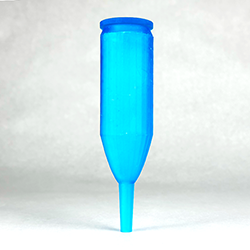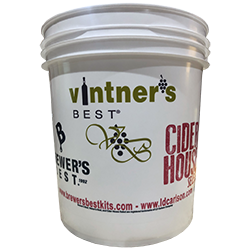The Great Divide: Why Home Winemakers Should Separate Equipment for Malolactic Fermentation
Posted by Matteo Lahm on 24th Apr 2023
There is a lot of debate and mystique surrounding Malolactic Fermentation, AKA MLF. The allure of creamier mouthfeel and more rounded acidity are almost irresistible intrigues. However, if you have tried this, you may have made subsequent wines that mysteriously got flabby and lost their signature flavors. If you were left scratching your head, you might recall tiny bubbles rushing to the top of your carboy for a few weeks when your wine was in secondary. It wasn't an infection, it was MLF and, though you did not add MLF cultures to your batch, it happened anyway. If you have not tried MLF but want to, or if you have already done it and want the option not to, there is a lot to consider. You will need to invest in more equipment. Once MLF bacteria has touched it, it is basically there forever.

The old adage of not fixing what is not broken holds true with MLF. It’s not a mandatory process and should only be employed if your wine benefits from it. At the the very least, you want to be able to control whether or not it happens. Picture this: you're an artist, and your canvas is the world of winemaking. You've got your brushes, your colors, and your vision but there's a sneaky little character lurking in your studio, threatening to mix your colors and muddy some of your masterpieces. That character is none other than the malolactic fermentation process. Fear not, dear winemaker, for you can follow an easy guide through the art of separating your equipment and ensuring that your wine remains a true expression of your creative genius.
MLF: The Genie and the Menace:
Before diving into the nitty-gritty of equipment separation, let's take a moment to understand the malolactic process. Malolactic fermentation (MLF) is a secondary fermentation process in which malic acid is converted into lactic acid by the bacteria Oenococcus oeni. This conversion softens the wine's acidity and adds complexity to its flavor profile. While MLF is a desirable process for some wines, such as reds and certain whites like Chardonnay, it can be a disaster for others, like Riesling or Sauvignon Blanc, which thrive on their crisp acidity. Crisp citrusy whites rely on malic acid for their signature characteristics and MLF will surely crash the party.

The Sticky Situation:
Now, you might be wondering, "Why can't I just clean my equipment thoroughly after MLF and use it for my non-MLF wines?" Well, that's where the metaphorical paint-mixing comes into play. Once your equipment has been exposed to the malolactic bacteria, it's nearly impossible to eliminate it completely. It's like trying to remove every last speck of glitter from a room after a craft project – it just won't happen. The bacteria can linger in the nooks and crannies of your equipment, waiting to pounce on your unsuspecting non-MLF wines and turn them into a muddled mess.
The Great Divide:
So, how do you keep your colors pure and your masterpiece intact? The answer is simple: separate your equipment. By dedicating specific tools and containers to your MLF wines and keeping them separate from your non-MLF equipment, you'll ensure that your wines remain true to their intended style. Think of it as having separate brushes for your oil and watercolor paintings – it just makes sense.
Here's a quick list of equipment you should consider separating:
1. Fermentation vessels: Whether you're using carboys, or fermenters, make sure you have designated containers for your MLF and non-MLF wines.
2. Hoses and siphons: These can be notorious for harboring bacteria, so it's best to have separate sets for each type of wine.
3. Airlocks and bungs: Keep your MLF wines sealed off from the rest of your winemaking world with their own airlocks and bungs.
4. Measuring and testing equipment: From hydrometers to pH meters, having separate tools for your MLF and non-MLF wines will help prevent cross-contamination.
Conclusion:
Any piece of equipment that comes in contact with MLF is tainted with MLF bacteria, forever. In the world of home winemaking, you are the artist, your equipment is your toolkit and to make masterpieces, you need to use the right tools. By separating your equipment for malolactic fermentation, you'll ensure that your wines remain true to their characteristics and your creative vision. So, go forth and create your winemaking masterpieces, knowing that you've tamed and sequestered the malolactic genie, so it only works its magic when it should, and does not menace your wine when it shouldn’t. Cheers!

